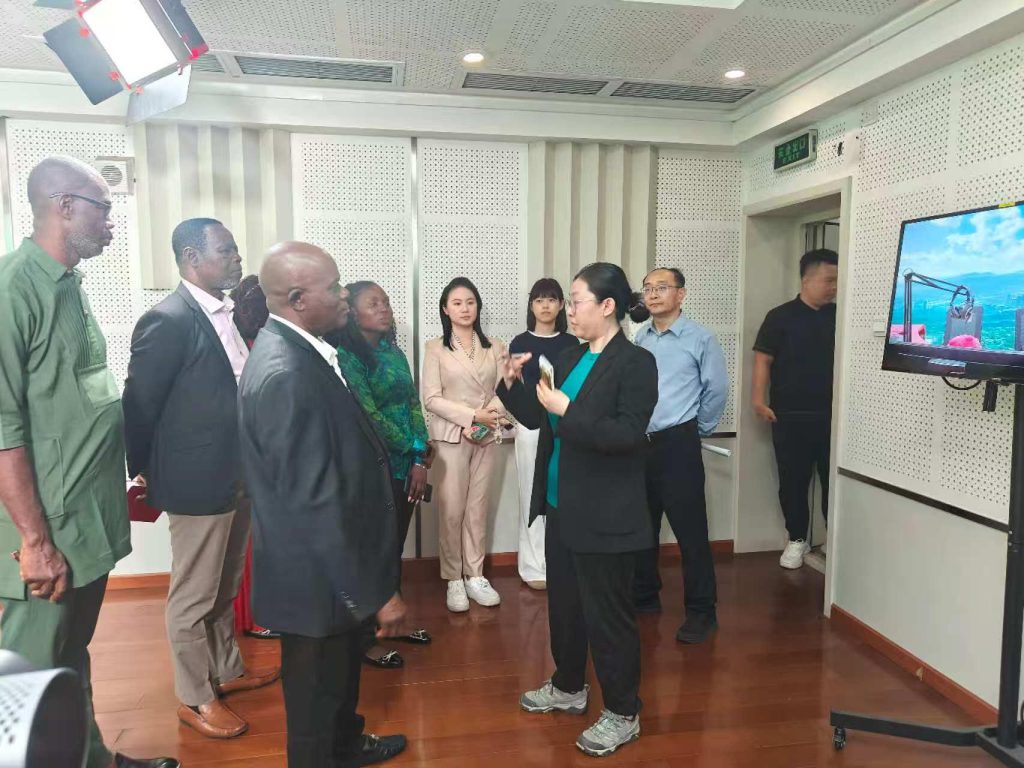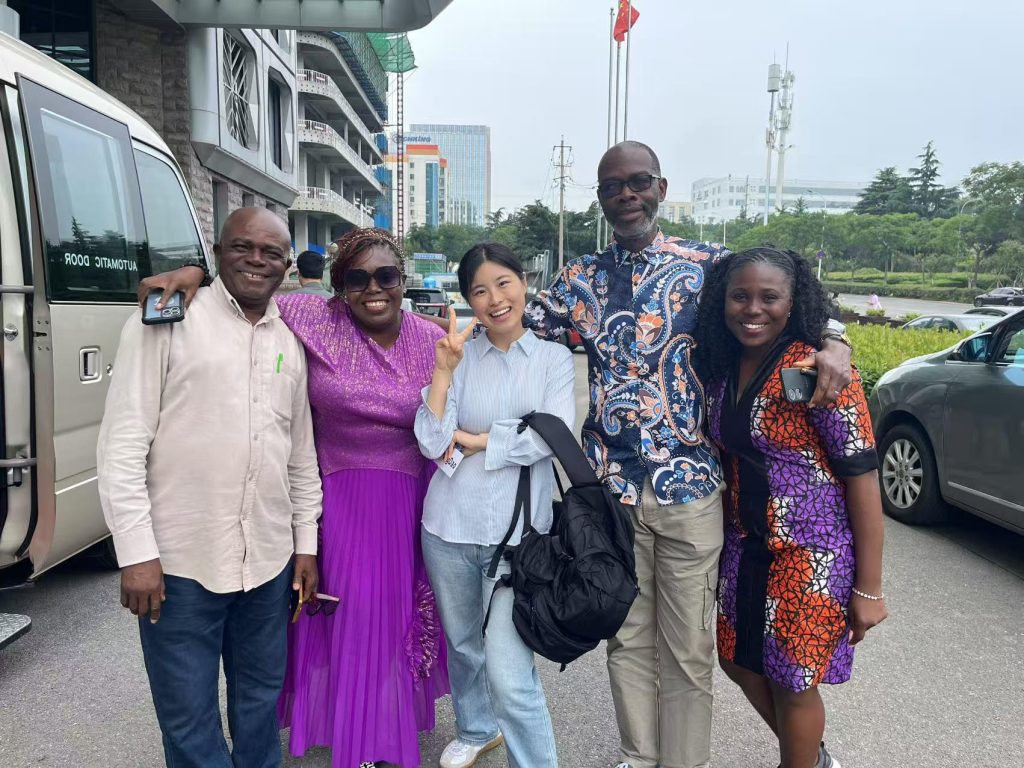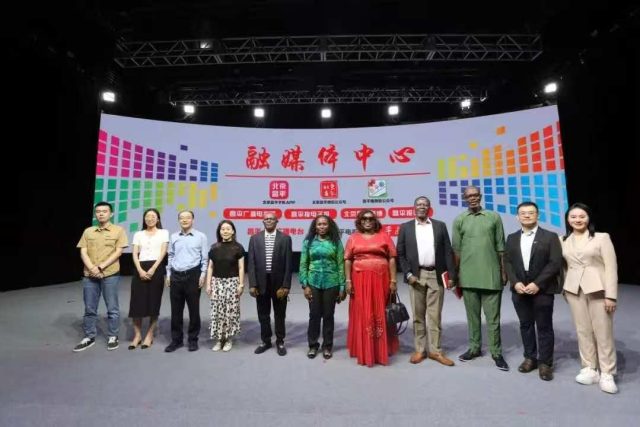The Integrated Media Centre of Changping District (IMCC) of Beijing is not your everyday type of media outfit.
This small-scale media organisation is only small due to its reach and audience within Changping in the large and sophisticated city of Beijing. However, by the time you hear that the district has a population of 2.27 million people, you may change your mind on how you rate it. Because radio, TV, and new media frequencies and reach are not like the water you can hold within dam walls, the reach of IMCC is far larger than this population. The audience of these arms won’t be less than 10 million consumers.
With its 300+ workers, the media platform has been ruling the waves in the past 16 years and is ever getting stronger, especially after achieving full convergence and integration since 2017. With China’s scale and standard of operation, IMCC boasts all state-of-the-art media equipment and endowment.
The newsroom, studio, AI cameras, advanced printing press, production rooms, transmission equipment/room, and all the multiple new media platforms with an average of 2.8 million followers across the board, IMCC is worth its salt.
Essential CSR
This place does a service that is rare to find in any media anywhere in the world. Free advertising for special products and services.
It may sound unrealistic, but IMCC indeed offers all farmers and food processing companies within Changping free advertising. It is its corporate social responsibility (CSR) to encourage food production through agriculture and align with China’s larger and compelling objective of enhanced and assured food security.
In China, farmers enjoy the benefit of a free water supply for irrigation, processing, and other needs. It is the support the government at all levels gives to farming to ensure that food security is not disrupted. This is actually 60% of the country’s water supply volume. Taking a cue from this and as a media platform of the government of the Beijing Municipality, IMCC offers farmers free advertising of their products to encourage them to produce food for the people.
Full media convergence
Even among the most advanced media groups in the world, the dream of an integrated media is hardly perfectly accomplished. But IMCC has a completely different story.

“Media integration and convergence is a mantra the industry holds dear and dreams to attain due to the changes in the world caused by the ICT disruptions. After showing us round the TV section, the radio studio, the production room, the new media – website, and multiple social media Apps, I asked the tour guide, “I have seen all these, and here looks like a fully integrated media space. However, I have not seen the print media. Why?
The lady laughed knowingly and added, “We have had a newspaper in the past 16 years. We print every Monday, Wednesday, and Friday. This has been sustained and uninterrupted in the past years.” Changping Bao (Changping Newspaper) has been in the past 16 years.
To be sure that I was told the truth, I requested to have a copy. And true to her word, she sent for copies and gave out to each of us, the team of Nigerian visitors. In each of these days, notwithstanding the negative pressure and impact on print media from web-based media globally, IMCC rolls out 250,000 copies. That is a total of 750,000 copies a week.
We are just local
With the awesome number of the audience that many major media organisations in the world can’t boast of, the management of IMCC says as a matter of fact that their reach is local to the extent of their content.
They don’t worry about the war in Iran, Israel, Russia, Ukraine, or earthquakes in other worlds. They concern themselves with their immediate world – Changping District of Beijing with 2.7 million people among the rest 20 million people of the large city.
At an interactive with the management after the facility tour, the handlers, Ms. Tian Dongwei, Deputy Director, Converged Media, Wang Ying, Diretcor of Editorial Department, , Wei Yu, Director of Print Media, Wang Jun, Director of Media Interview Centre and Jiang Xiaopan, Deputy Director of New Media still assured that their professional energies are directed at taking care of the Changping audience only.
Qingdao media too
Qingdao Daily is a newspaper of the elegant city of Qingdao. It prints millions of copies every year, and they are all bought up, according to the tour guide who took us round the media house last week. He said the copies are sold through subscription, and the fact that the government owns it and also public officials subscribe to the copies, a privilege that has been shielding them from the vagaries of the new media that is chasing print media into hard times. Yet, he admitted that the new media is a threat to the print media, but said there is no likelihood of newspapers going extinct. He believes that innovation would cause a turnaround. According to the media chief, the threat is a global issue that faces the media industry. The company that has over 300 journalists, apart from over 1,000 editors, has been the hub of mass media public information in the city. In China, the concept of an editor is different from what it is in Nigeria, for instance. Those who translate and rework reports are, in fact, editors and may not necessarily be journalists or reporters.
The platform has its fair reach into media convergence and integration.

Qingdao Daily owns the Guanghai New Media platforms with a good pool of online apps and millions of followers
Qingdao News is another arm, and also the International Team of Qingdao News, with social media linkages beyond China and the city. Each has a segmented duty to perform in the integrated media pool. It was from the International Team of Qingdao News that a media team of a reporter, Ms. Qu Huili, and a cameraman was designated to tour Qingdao with the team of Nigerian journalists.









